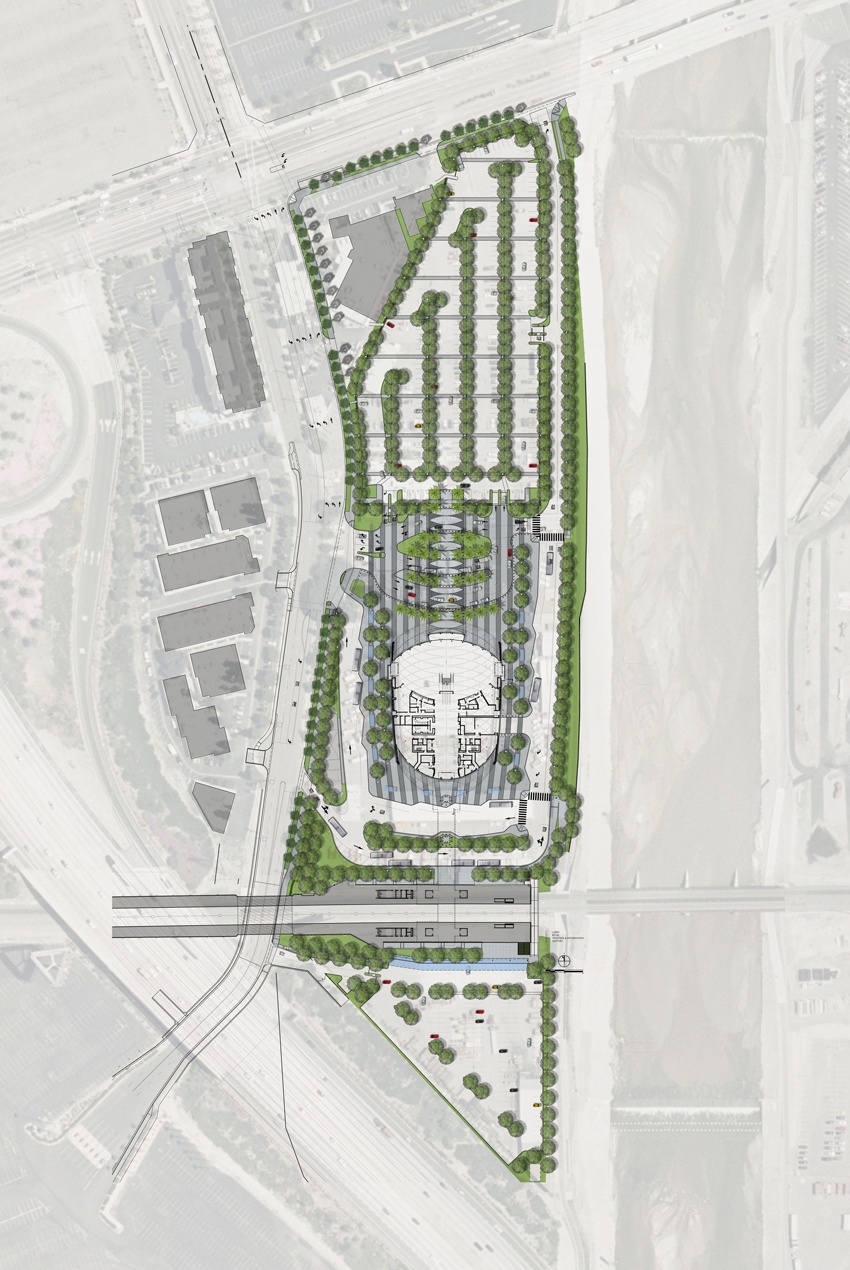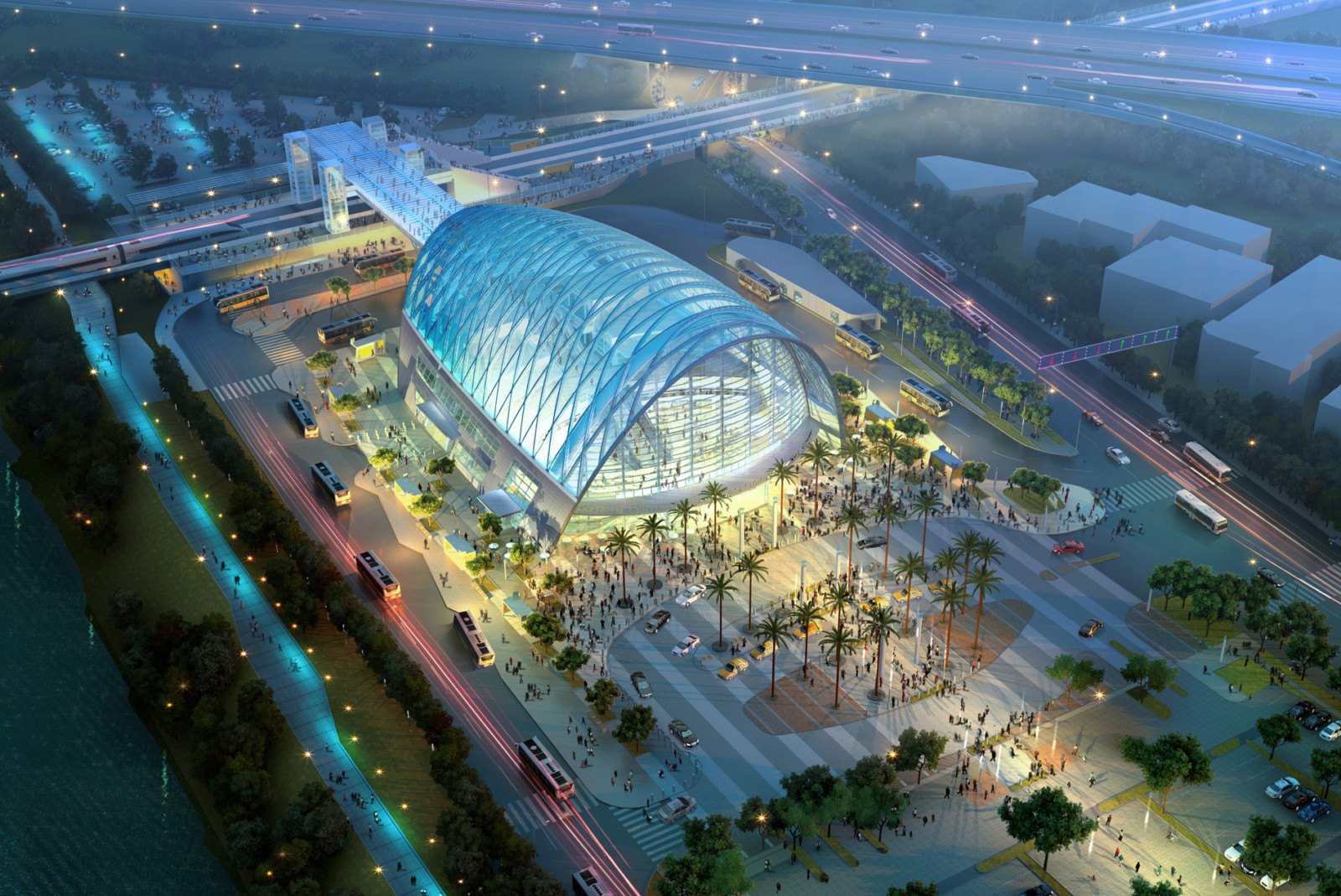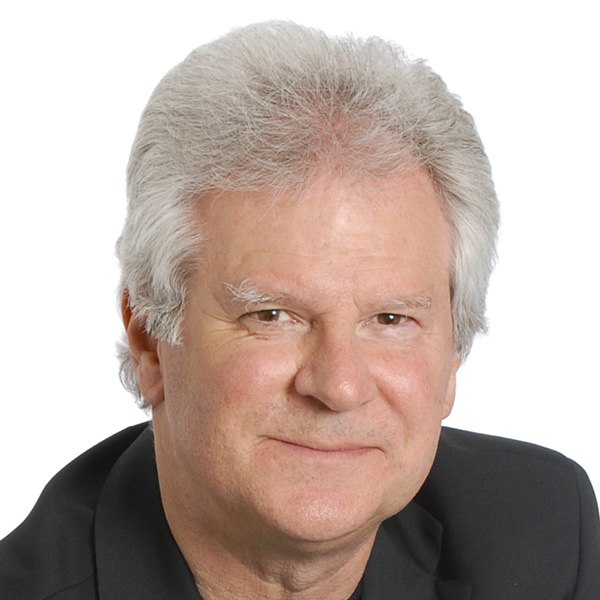Anaheim wanted a transportation hub that would become an icon for public transit. It needed to encourage Orange County’s three million residents and 50 million annual visitors to think beyond the automobile and toward a future of smart, sustainable travel.
The Anaheim Regional Transportation Intermodal Center (ARTIC) provides Southern California with a flexible, futuristic terminal for rail, bus and auto passengers in addition to bicyclists and pedestrians. The parabolic design concept of diamond-shaped steel arches infilled with translucent ETFE (ethylene tetrafluoroethylene) creates a grand, light-filled atrium space reminiscent of the world’s great passenger terminals of the early-20th century.
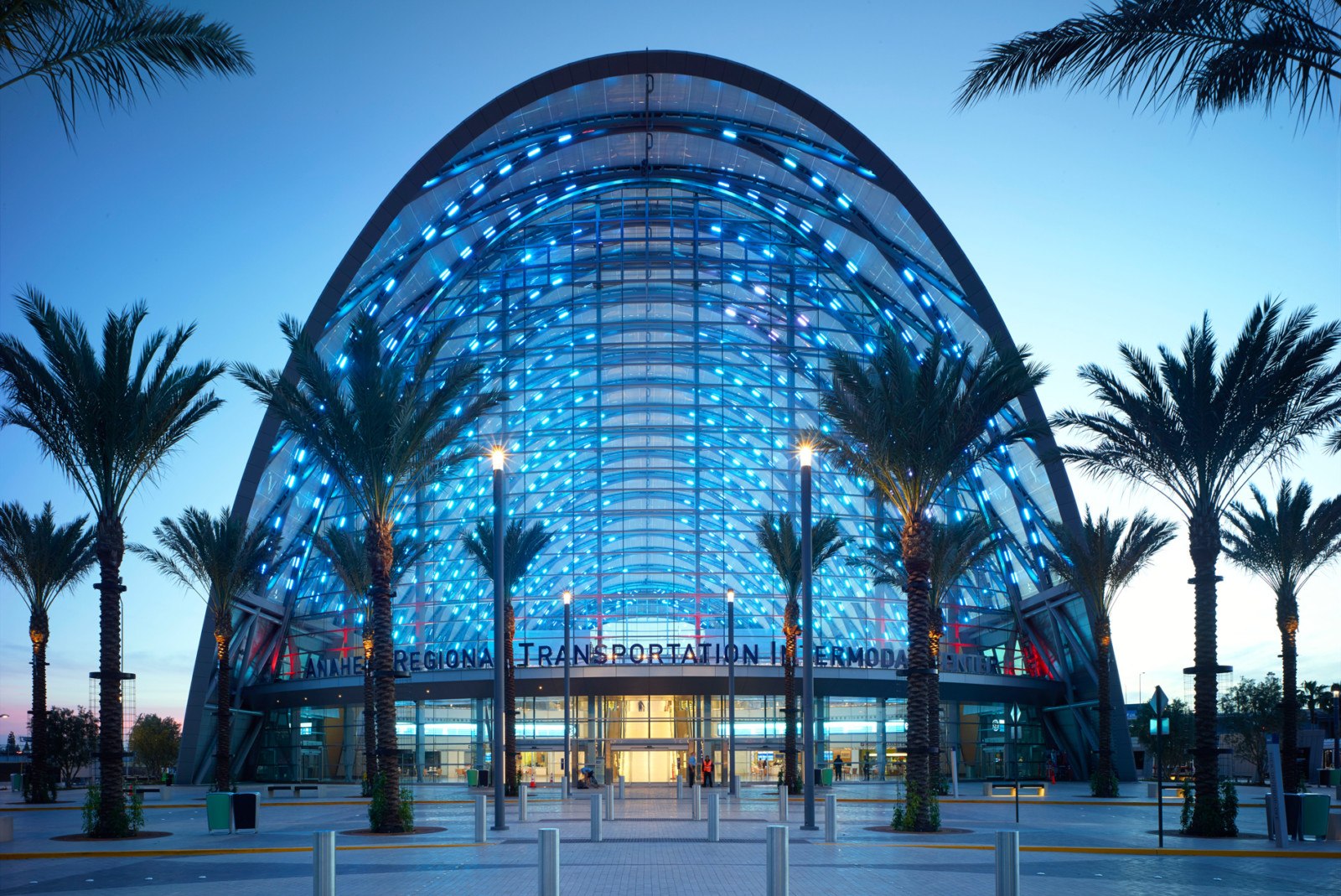
LED lights mounted within the framing illuminate the ETFE panels in gradations of shifting colors, creating a striking presence on the nighttime skyline. Dining and retail space located within the main hall further activates the building, which HOK designed to accommodate California’s future plans for high-speed rail and Anaheim’s proposed streetcar system.
“In the Southern California home of Disneyland, itself a celebration of mobility and fantasy, the Anaheim Regional Transportation Intermodal Center, or ARTIC, is a soaring, optimistic expression of the potential for public transportation in this capital of car culture.” — Architectural Record
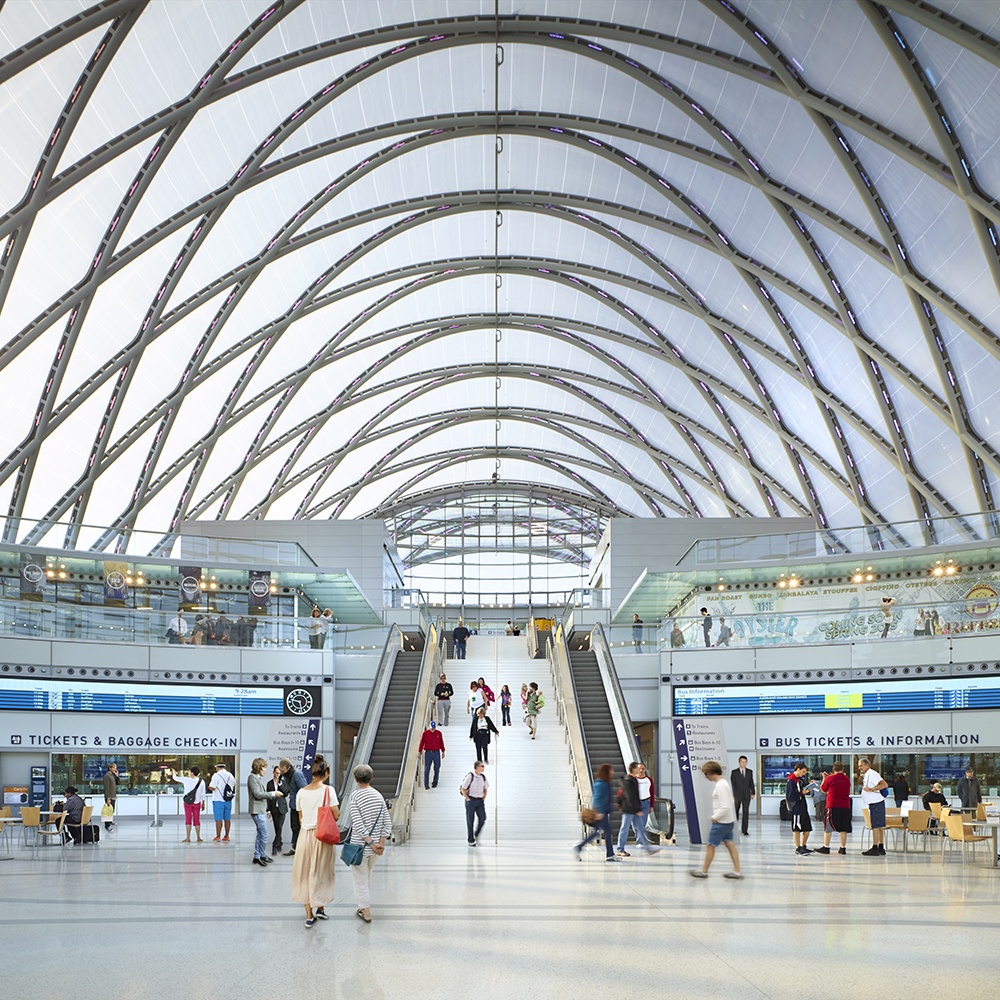
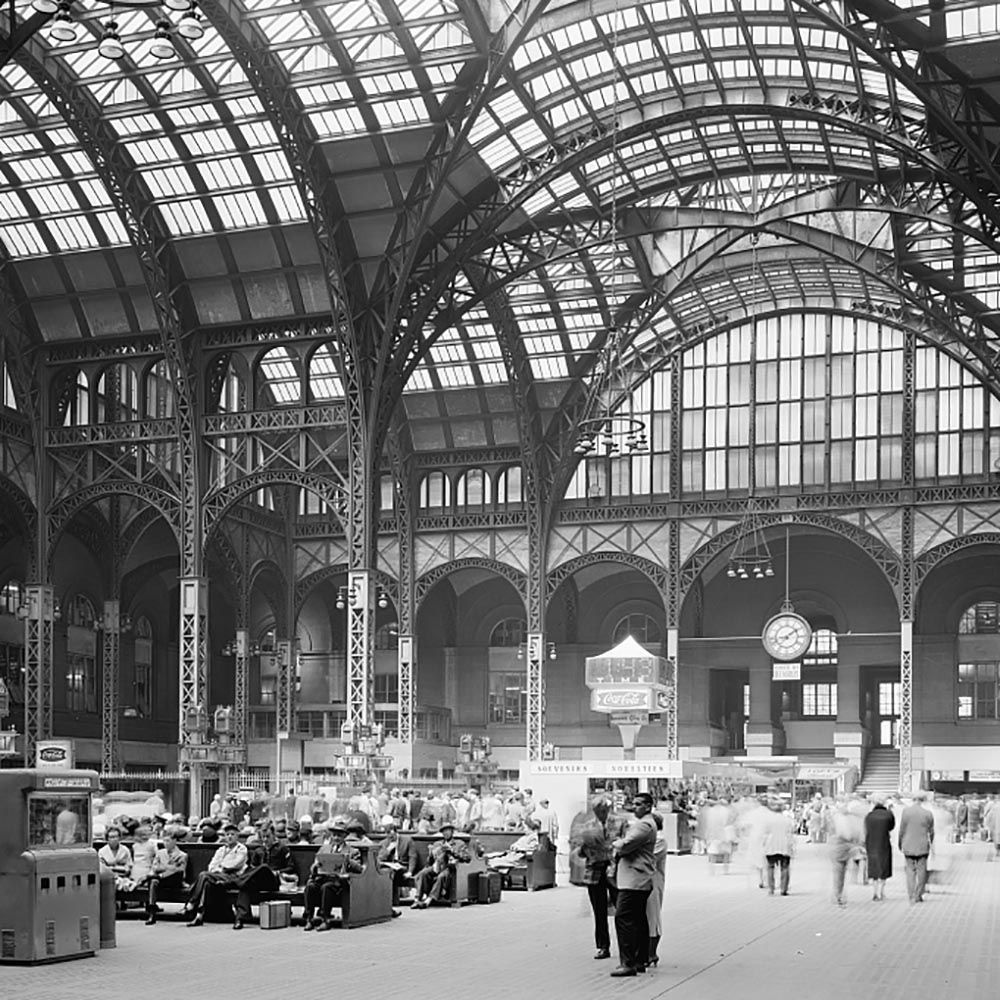
Light, Modern Design (With Inspiration from the Past)
Inspired by grand transit halls such as Philadelphia’s Broad Street Station and New York City’s original Penn Station (above, courtesy of the Library of Congress Prints and Photographs Division), ARTIC’s catenary form and diagrid shell structural system allows for a light-filled, column-free main hall while minimizing the amount of steel required for framing.
Two parabolic glass walls enclose the front and rear of the structure, complementing the natural light provided by the ETFE panels and offering views to city landmarks and the nearby Santa Ana Mountains.
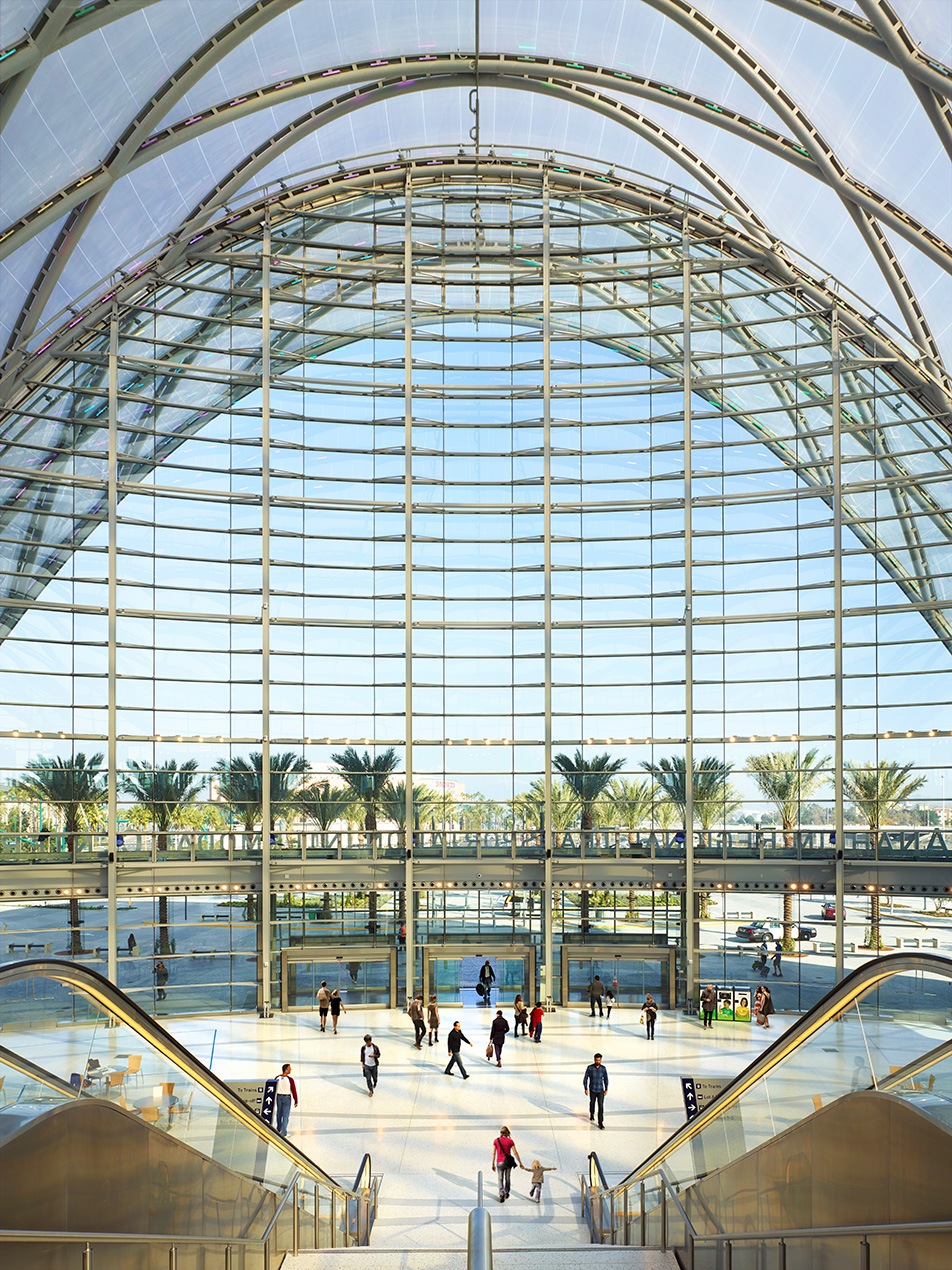
Use of the ultra-lightweight ETFE (1/100th the weight of glass) eased structural loads and allowed for larger panel sizes, streamlining the support structure. When it opened, ARTIC’s 200,000 square feet of EFTE made it North America’s largest building to use the high-tech cladding.
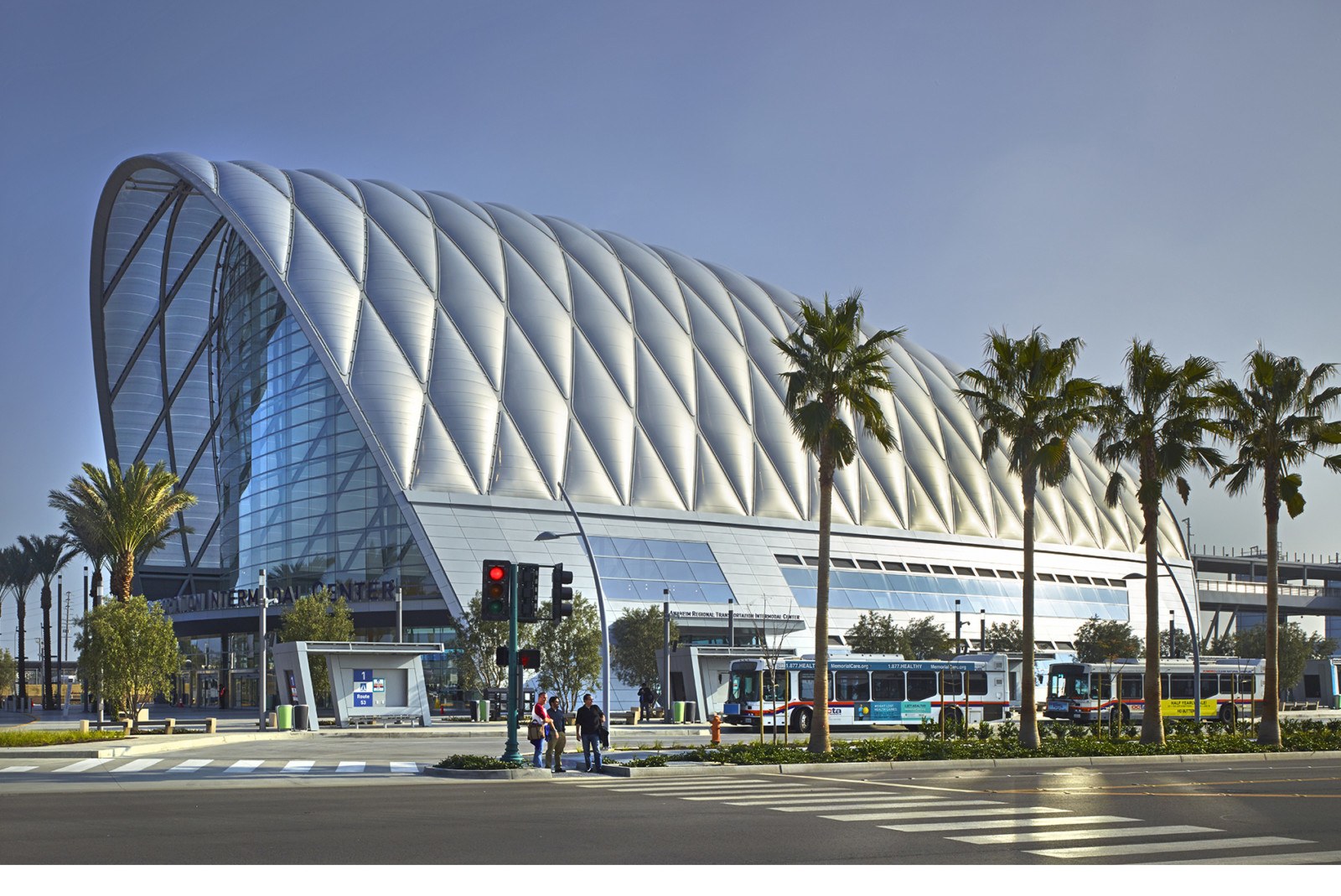
ARTIC is one of the world’s first transit centers to achieve LEED Platinum certification.
A Sense of Place
Strategically located in Anaheim’s “Platinum Triangle,” an area that includes Angel Stadium and the Honda Center, ARTIC is near multiple points of interest including the Anaheim Convention Center and Disneyland. A connection to an adjacent pedestrian and cycling trail along the Santa Ana River opens ARTIC to non-vehicular traffic. Its master plan establishes a clear pedestrian pathway to future mixed-use development.
The building’s landscape architecture complements both its operations and surroundings. Date palms and olive trees within ARTIC’s outdoor plaza create shaded seating areas for riders while succulent gardens add vibrant colors and texture. These drought-tolerant plantings are irrigated entirely from rainwater and graywater, contributing to the building’s 80 percent reduction in potable water consumption.
ARTIC’s unique architecture and striking form have made it one of the most photographed spaces in Anaheim as well as a popular set location for TV and film.
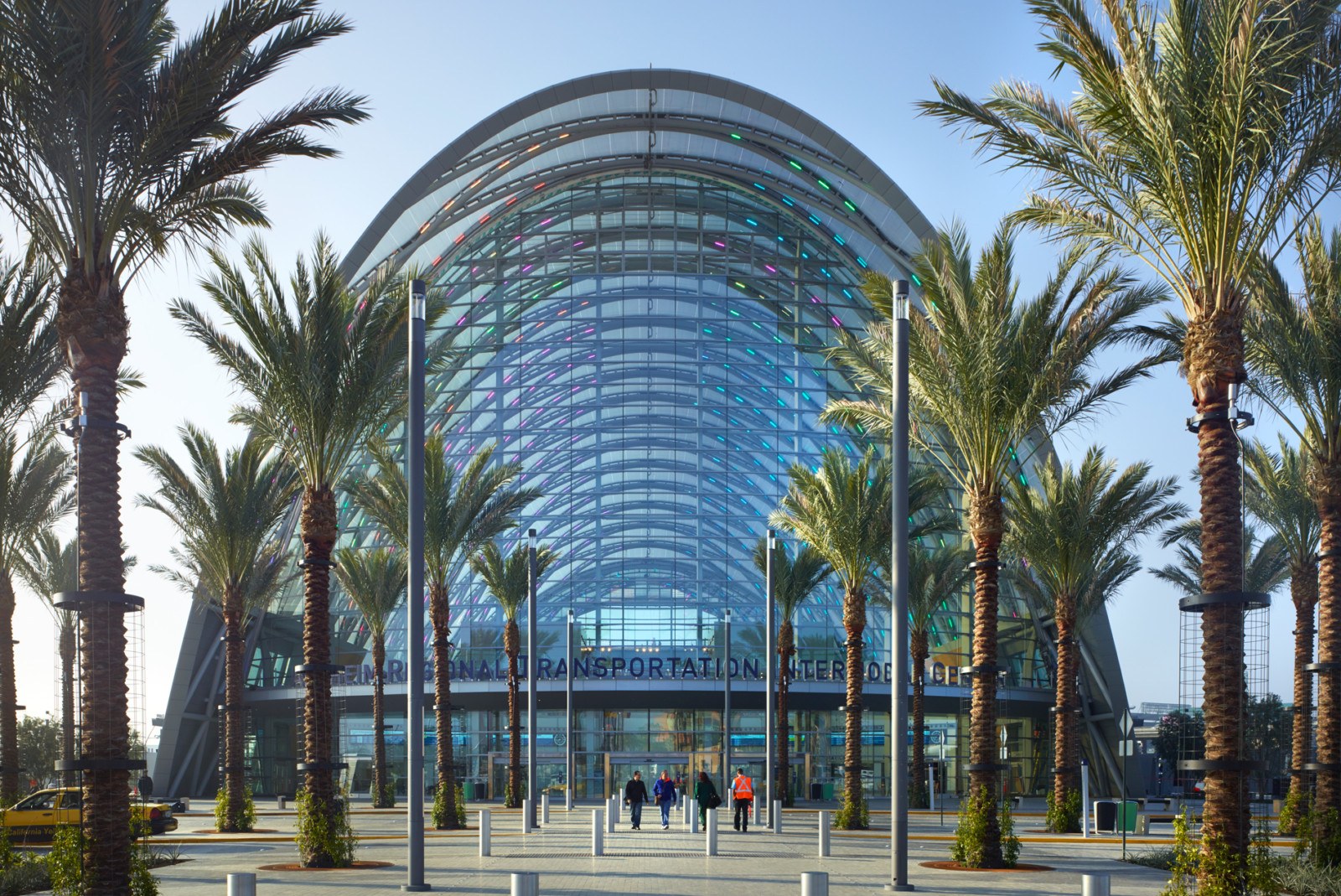
“It is an innovative piece of architecture. The form is one of beauty and simplicity.” — AIA Technology in Architectural Practice Award Jury
